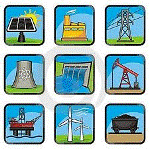Department of Agricultural Economics: Undergraduate Research

Op-Eds from ENSC230 Energy and the Environment: Economics and Policies
Date of this Version
Fall 12-19-2016
Document Type
Editorial
Citation
Op-ed from ENSC 230. Energy and the Environment: Economics and Policy, University of Nebraska-Lincoln, Department of Agricultural Economics, Fall 2016
Abstract
“… the members of the Bulletin of the Atomic Scientists Science and Security Board have looked closely at the world situation and found it highly threatening to humanity—so threatening that the hands of the Doomsday Clock must once again be set at three minutes to midnight, two minutes closer to catastrophe than in 2014…Meanwhile, as they slow the pace of disarmament, the nuclear weapon states have given other strong indications that they are committed to retaining nuclear weapons for the indefinite future” - Bulletin of the Atomic Scientists (2015). "Three Minutes and Counting".
Nuclear proliferation and climate change pose the greatest threats to humanity. Climate change will have major effects in the coming 50 years, but nuclear risks are always present. The world is unstable and develOp-ed or developing nations are looking to nuclear weapons as a form of ultimate deterrence.
Humanity narrowly avoided the grips of nuclear catastrophe during the Cold War and Cuban Missile Crisis, but isolated nuclear events have still occurred. Nuclear energy facilities like Chernobyl, Fukushima, and Three Mile Island have all failed. Each of these facilities experienced nuclear meltdown that costed human lives, decades of environmental damage, and billions of dollars. Japan's Fukushima disaster is estimated to cost the government over 170 billion USD in total damages in the coming decade.
Weapon-Grade and nuclear energy facilities are not needed as deterrents and are not required to achieve wide scale clean, energy production.
Legislation like Nuclear Weapons Abolition and Economic and Energy Conversion Act of 2015 properly addresses nuclear proliferation. The bill has three main goals:
- A multinational treaty for the dismantlement and elimination of all nuclear weapons
- Redirect resources going towards nuclear programs and put it towards weapon elimination and constructing other sources of renewable energy
- Actively promote policies to promote other countries to join nuclear treaties to create a more secure world
The United States has a huge role in influencing the reduction of nuclear proliferation as we have a far reach across the world. The US needs to take the lead and promote policies to lower risk of a nuclear event from a weapon-grade nuclear bomb or fallout from an energy reactor.
A modern nuclear warhead causes not only a direct blast the size of a smaller city, but also causes firestorms, earthquakes, gale force winds, electronic failure, extensive radiation, and a nuclear winter caused by heavy ash blocking out the sun. A nuclear winter is predicted to last 10 years leaving the planet in record low temperatures. Due to these low temperatures, widespread widespread famine is possible from low agricultural production.
Civilian nuclear reactors producing energy are just a couple of steps away from a weapons facility and should be treated as such especially in developing countries. Weapons production is hid easily under the guise of clean energy with no international mediator. The recent Iranian nuclear deal is a perfect example of outside nations attempting to lower the threats of potential nuclear development.
Dr. Matthew Fuhrmann, an associate professor of political science at Texas A&M University, suggests in his study "Spreading Temptation", that "Participation in at least one nuclear cooperation agreement increases the likelihood of beginning a bomb program by about 500 percent." The correlation between civilian nuclear energy production and weapons production are causally related.
The levelized cost of the electricity (LCOE) is much higher for nuclear energy than it is for any other renewable resource. The LOCE is the very minimum electric companies can charge to break even on their investment. The Energy Information Administration or EIA, in their annual 2015 report, showed that the LCOE for nuclear is 103$/MWh which is almost double that of wind and solar at 65$/MWh and 85$/MWh, respectively.
Planning, licensing, construction, and commissioning of nuclear facilities can take as long as 10-20 years. According to the Nuclear Energy Agency, construction generally takes up to 5-7 years without delays. In addition, the Nuclear Energy Institute says licensure and planning can last at a minimum of five years. Wide scale solar and wind energy can be implemented and connected to the grid in less than a year and immediately start reducing our carbon footprint.
The repercussions of a nuclear accident are extremely costly and the risk only increases with increased construction of nuclear facilities. These plants are more costly than other renewable technologies and take much longer to start up. It is in our best interest to leverage domestic and international policy to decrease the number of nuclear facilities and create other alternative, more stable, carbon-free sources of energy.
Included in
Environmental Indicators and Impact Assessment Commons, Natural Resources and Conservation Commons, Oil, Gas, and Energy Commons


Comments
Copyright 2016, Eric Davis. Used by permission